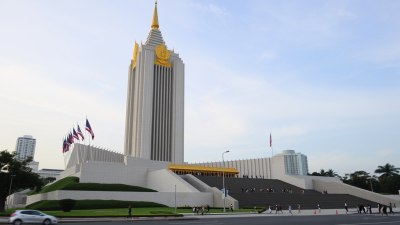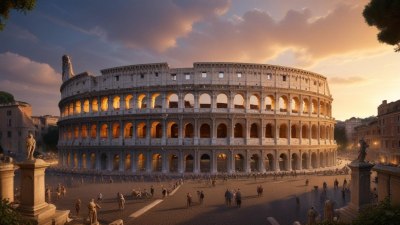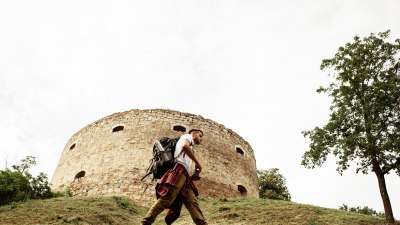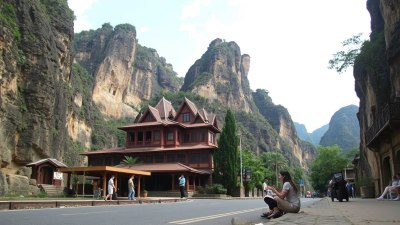The Victory Monument in Thailand Forgets What It Was Built For
Explore the history and significance of Thailand's Victory Monument and its evolving meaning over time.

Image created with Flux Schnell
The Victory Monument in Bangkok, Thailand, is one of the country's most significant patriotic symbols. Erected in 1941, originally to commemorate Thai military successes during World War II, it stands at an important crossroads, symbolizing victory, sacrifice, and national pride. However, as time has passed, its purpose and the public's perception have evolved, leading many to ponder what the monument represents today.
Historical Context
Constructed during a tumultuous period in Thai history, the Victory Monument was initially built in the wake of the Franco-Thai War, where Thailand fought to reclaim territories from French colonial rule in Indochina. The monument was unveiled in June 1941, designed to honor those who sacrificed their lives during the conflict. The architectural style of the monument is a mixture of Western and Thai influences, showcasing elements of Art Deco, symbolizing modernity and progress at that time.
Architectural Design
The structure itself is a soaring obelisk, surrounded by five military statues representing the Thai Army, Navy, and Air Force, emphasizing the collective effort and bravery of the country's armed forces. At the base of the monument, there is an array of relief sculptures depicting various military activities and heroic deeds, designed to inspire future generations with stories of sacrifice and bravery. The monument's striking presence in the heart of Bangkok serves not only as a reminder of past conflicts but also reflects the evolving narrative of national identity.
Changing Significance
In recent years, the significance of the Victory Monument has shifted. While it once symbolized national pride and military success, it now stands as a controversial site of protest and political dissent. The vibrant atmosphere around the monument often reflects the dynamic political landscape of Thailand, with demonstrations frequently taking place in its vicinity. Activists have adopted the site to voice their discontent with governmental policies, calling into question the very ideals of sacrifice and honor that the monument was built to represent.
Modern-Day Context
Today, the area surrounding the Victory Monument is a bustling hub of commerce and community life. The monument itself is often overshadowed by the surrounding developments, with shopping malls, street vendors, and bustling markets drawing attention away from its original purpose. The rapid urbanization of Bangkok and the ongoing struggle for democratic rights seem to have transformed the monument from a mostly apolitical symbol of state pride into a space where the complexities of modern Thai society are played out in public. As people gather at the foot of the monument, they engage in dialogues that challenge the narratives of war and sacrifice that have long been upheld.
Tourists and Locals
The Victory Monument attracts numerous tourists and locals alike, each with varying degrees of awareness of its historical significance. For many tourists, it serves as a backdrop for photographs, often devoid of the emotional weight that the monument continues to represent for Thai citizens. Conversely, local residents are deeply aware of its complex history and the powerful symbolism it holds, especially in the context of ongoing political movements. This duality of perception highlights a fundamental aspect of national identity, reflecting how history can be interpreted through different lenses.
Memorialization and Education
Efforts to educate the public about the true significance of the Victory Monument are ongoing. Schools and community organizations engage in discussions surrounding the themes of military conflict, national pride, and political activism, aimed at fostering a more nuanced understanding of the monument's history. Exhibitions and events are periodically held to commemorate the lives lost in conflict, while simultaneously addressing the military's role in shaping the modern Thai state. As younger generations grapple with their nation's past, the Victory Monument serves as both a reminder of glory and a call for reflection on the realities of war.
Reflections on War and Sacrifice
With its towering presence, the Victory Monument compels both admiration and criticism. It forces a confrontation with the realities of sacrifice and loss in war, which are often romanticized in narratives of national identity. In contemporary discourse, the idealization of military success is being reevaluated, raising questions about the legitimacy of state power and its use of force. Activists and historians alike argue that a critical reexamination of such symbols is essential in moving towards a more democratic and inclusive society.
Artistic Interpretations
Various artists have sought to reinterpret the narrative surrounding the Victory Monument through their creations. From graffiti artists who use the monument as a canvas for protest art to photographers capturing the dichotomy of beauty and decay, these artistic expressions provide fresh perspectives on a longstanding symbol of national pride. By challenging the traditional narratives associated with the monument, these works encourage a dialogue around the complexities of identity, sacrifice, and the role of the military in shaping the nation.
The Future of the Victory Monument
As Thailand continues to evolve politically and socially, the future of the Victory Monument may witness further reinterpretation. With the rise of social movements and calls for reform, this iconic structure may serve as a battleground for new ideas and values, representing a shift from blind patriotism to a more critical engagement with the state's actions. The monument's role as a site of reflection and protest highlights a growing willingness among the Thai populace to engage with their history, fostering a deeper understanding of the sacrifices made in the name of national pride.
In essence, the Victory Monument in Thailand serves as a complex symbol with a rich narrative. What was once solely a tribute to military success has morphed into a site of political dialogue and reflection on national identity. As future generations continue to grapple with their history and redefine what it means to be Thai in a modern context, the Victory Monument stands as a steadfast reminder of the past, inviting all to reflect on the meaning of sacrifice, glory, and the path toward a more inclusive future.











